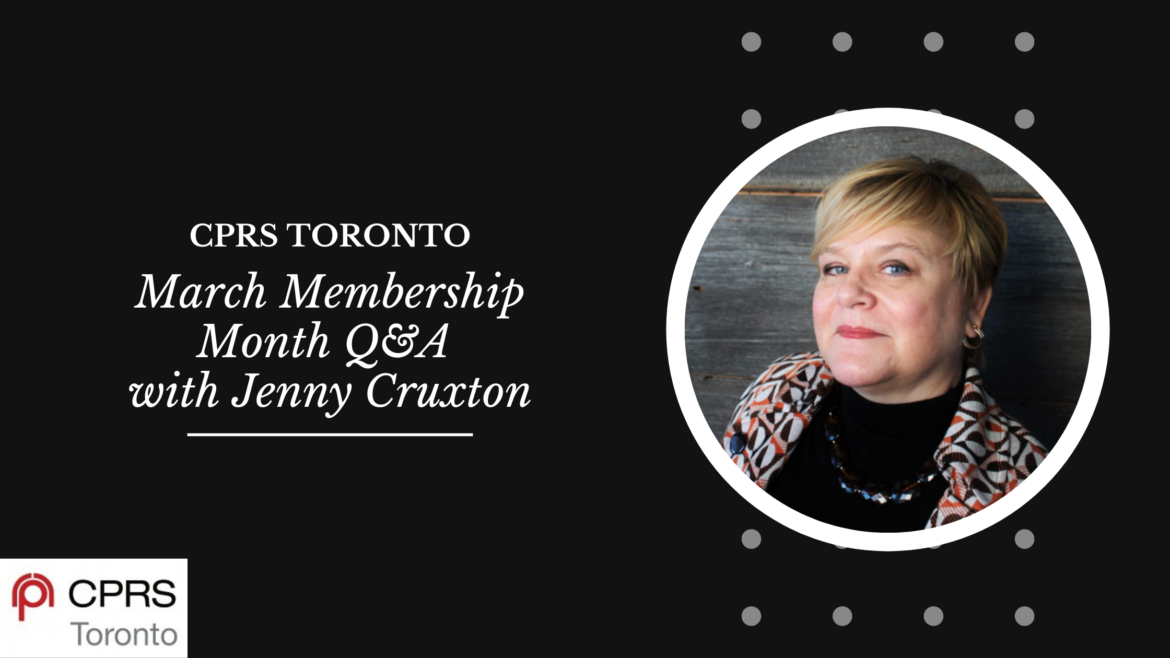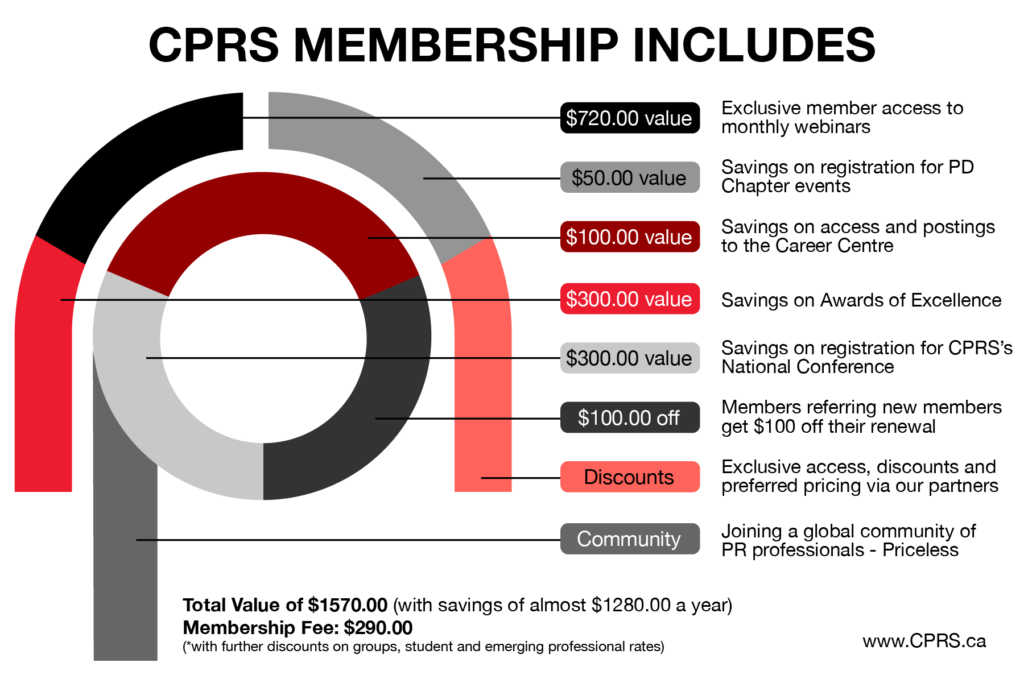Written by: Kaila Currie-Bartlett, Account Executive, Craft Public Relations & Digital Communications Coordinator, CPRS Toronto
For our May In Conversation With series, we connected with Jaclyn Cossarini, one of CPRS Toronto’s social media coordinators and current student in Humber College’s Public Relations Graduate Certificate program. She is a Queen’s alumni with a Honours Bachelor of Arts in history and health studies and is very passionate about public affairs, advocacy, and all things communications.
What is it like completing your graduate certificate during COVID-19?
Starting and completing my graduate certificate in a virtual learning environment has been a unique introduction to the communications industry. My classmates and faculty have adapted to a new method of collaboration and communication. I have found that the independent learning style has provided more time to focus on the work at hand, and improved school-life balance.
Unfortunately, remote learning has limited opportunities to form professional connections in the industry. I find myself missing out on the opportunity to tour agencies in person and network with professionals over a cup of coffee. While virtual coffee chats are admittedly easier to schedule, there is something to be said about the difficulty that comes with forming meaningful connections with someone through a screen.
What are you most excited for when thinking about entering the working world/starting your internship?
I am most excited about applying the skills I have learned at Humber College and my practical experience with CPRS Toronto as a social media coordinator into client-facing work for an agency. Through various projects at Humber, I have grown to love working with clients to approach problems and collaborate to build meaningful solutions as a team. I am also hopeful that I will be able to integrate elements of my undergraduate research at Queen’s University into a role in public affairs. My research on Indigenous advocacy and reconciliation has been a formative part of my education, and I would love to find a role in public affairs that allows me to combine this experience with my love of communications.
Do you have any advice for those looking to learn more about or get involved with the PR and communications industry?
I highly recommend getting involved with a professional association like CPRS. Volunteering is a great way to develop your industry experience and grow your network. A membership will provide you with countless opportunities to attend events with industry professionals, which is a great way to learn from the best in the field.
I also recommend using social media platforms to your advantage. Start connecting with industry professionals on LinkedIn, follow relevant hashtags on Twitter and even consider starting your own blog. Staying relevant, informed and being an active participant in the landscape are great ways to learn more about PR and communications.
Any advice you would offer to future students considering the Humber PR postgraduate certificate program?
If you are considering the program and have questions, do not hesitate to reach out to alumni. Simply search ‘Humber Public Relations’ on LinkedIn or Twitter, and you will find countless individuals who would be more than willing to chat with you about the program and their career paths. There is no doubt that Humber PR is a challenging program, but I have learned (and heard from many alumni!) that it really does prepare you for work in a real-world communications environment. If you can manage your time effectively, collaborate with your peers and work hard, you will find this program to be a rewarding path to a future career in PR and communications.
About CPRS Toronto’s In Conversation With blog series
Once a month, CPRS Toronto’s communications and marketing subcommittee will post quick conversations with GTA public relations practitioners and industry thought leaders. During these conversations we look to explore the impact COVID-19 has had on communication practitioners, as well as provide insights into the future of public relations moving forward. If you are interested in participating, please contact our Digital Communications Coordinator, Kaila Currie-Bartlett at kailacurriebartlett@gmail.com.





 Jenny Cruxton talked about the Media Relations Points (MRP), an online, subscription-based service that helps communications professionals measure, evaluate and report on earned, paid, shared and owned media resulting from media relations campaigns.
Jenny Cruxton talked about the Media Relations Points (MRP), an online, subscription-based service that helps communications professionals measure, evaluate and report on earned, paid, shared and owned media resulting from media relations campaigns.








